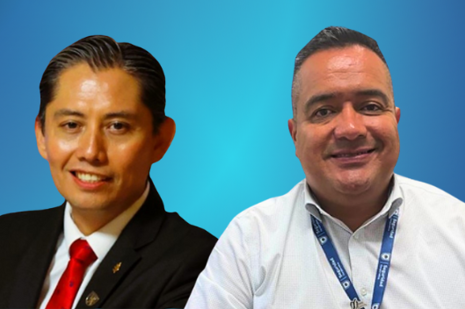
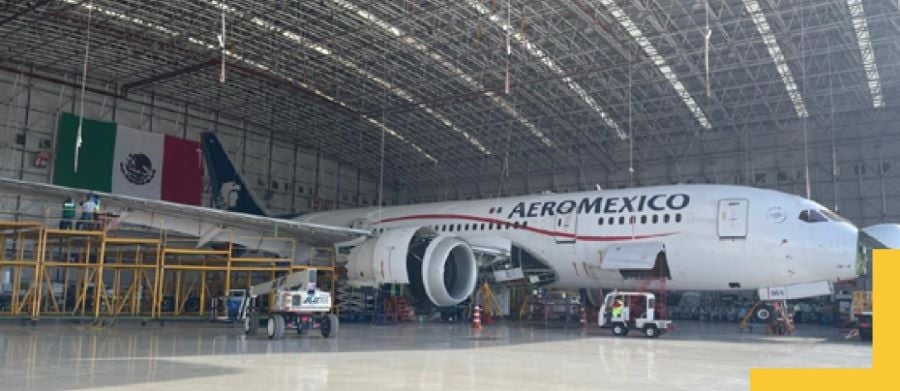
Grupo Aeromexico, S.A.B. de C.V. is a holding company whose subsidiaries are engaged in commercial aviation in Mexico and the promotion of passenger loyalty programs. Aeroméxico, Mexico’s global airline, has its main operations center in Terminal 2 of the Mexico City International Airport. Its destination network has reach in Mexico, the United States, Canada, Central America, South America, Asia and Europe. The Group’s current operating fleet includes Boeing 787 and 737 aircraft, as well as the latest generation Embraer 190. Aeroméxico is a founding partner of SkyTeam, an alliance that celebrates 20 years and offers connectivity in more than 170 countries, through the 19 partner airlines. Aeroméxico created and implemented a Health and Hygiene Management System (SGSH) to protect its clients and collaborators at all stages of its operation.

During our preparations for IOSA, here in Aeroméxico’s Maintenance division, we realized that we were not compliant with its requirement to have a process in place to assess all risks. Our existing risk assessment and management process did not cover human factors. Additionally, we were aware that the way we dealt with cases involving people was the same, whether there was malicious intent or not. We therefore had two objectives, instigated by our vice-president: to ensure compliance with IOSA requirements, and to improve our safety culture in Maintenance.
A positive safety culture is an integral part of the safety management system, and the first two behaviors Aeroméxico expects from its employees are safety and integrity. However, we cannot expect employees to be honest and raise their hand about safety risks when they may be held accountable for them in an arbitrary way. Staff need to trust that what they say will be considered fairly.
That’s why we decided to create a Just Culture committee in addition to our risk assessment committee, and we’re very proud to be the first airline, perhaps in the world, that has such a committee for Maintenance. As part of our risk assessment process, every event that involves human factors is referred to the Just Culture committee. Its members then identify if the persons involved acted intentionally or not, whether there was negligence, and what organizational weaknesses led to the event, so that they can be remedied.
Of course, to be accurate and fair in their evaluation, committee members need to come from every department, providing a holistic perspective to determine the root cause of an event and its impact. We had identified that we needed maintenance managers, quality assurance personnel, human resources staff, union representatives, safety people, and even accounting managers to make up the committee. It was also essential that they have the same understanding of just culture so that they could effectively evaluate human performance, as well as decide what course of action to take. And therefore we needed training on these concepts, within aviation and around the world.
IATA is a very important global organization in our industry, and we previously had an excellent experience with Fatigue Risk Management System training from them. That training had made us think more about the effect of human factors such as fatigue and circadian rhythm disturbances, and it was clear to us that IATA would be able to help us, even though they had no existing course on just culture. They have the experts to develop this kind of course.
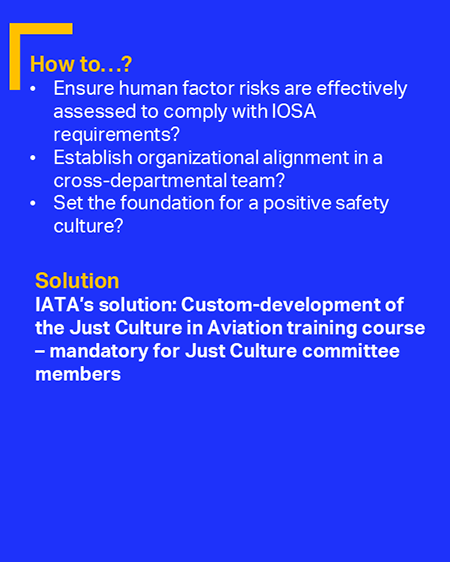
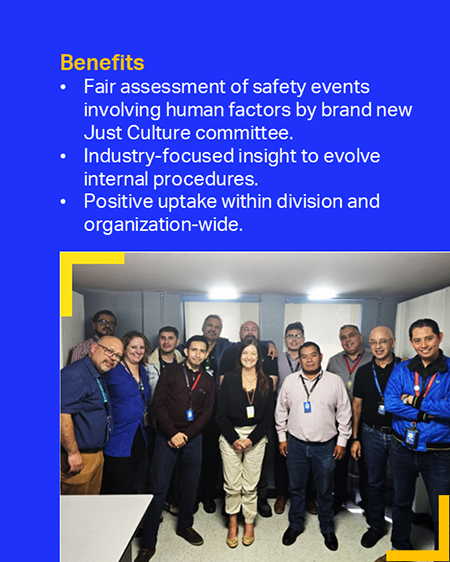
The resulting training – Just Culture in Civil Aviation – lasted for three days, which was a good length of time to delve into the conceptual frameworks of safety culture, and the analytical tools we needed to assess safety events at different levels. The content exactly mirrored what we were aiming to understand, and 14 people were trained initially. Our instructor was excellent. Like all IATA’s instructors, she has hands-on industry experience – she’s currently working at the Argentinian civil aviation authority – and she gave us different perspectives of safety management systems drawn from around the world.IATA’s instructors have in-depth knowledge of the IOSA process, and understand standards and actual practices in different countries and globally. They can give us real-world examples of different behaviors and approaches at different airlines and MROs, and this industry-focused insight enables us to relate quickly, and think about how we can apply the knowledge to our own situation. The experiences our instructor shared, along with the practical exercises, and the opportunity for participants to openly communicate their own experiences, made for an enriching learning environment. Several of the participants were managers with significant experience themselves, from engineers who saw things from a regulatory perspective, to human resources people who have a people and company point of view. The exchange of ideas really enabled us to consolidate the concepts the instructor gave us, and begin to create approaches that work in our own environment.
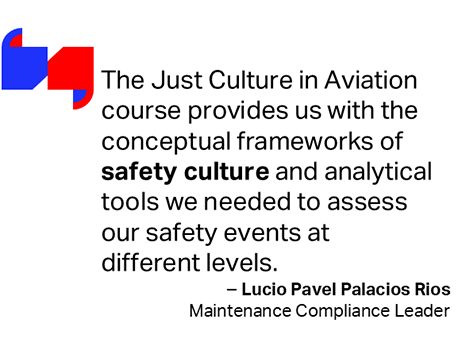
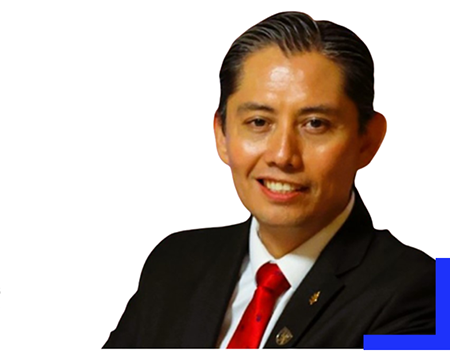
With 14 people trained from various departments, we were able to put in place our Just Culture committee in the Maintenance division. It has changed how we assess events involving human error. For example, in one event, we discovered that the person involved was suffering from fatigue due to the recent birth of their child, which is obviously not intentional, whereas in another case, the person took shortcuts instead of following the procedures correctly, which is intentional. In both cases, we have a responsibility to investigate what we need to change as an organization, to prevent such situations from arising. And this means that we need to try to resolve all cases in a non-punitive way and alter our processes and procedures to reflect that. By improving our organization in this way, we raise the confidence and participation of our staff in maintaining safety, which is the basis of a positive safety culture.
It is still early days for our committee though. So far this year, we have 28 resolutions of events. This could be a baseline for our improvement efforts.We are going to be doing a survey including questions on just culture, which we hope will give us insight into how we can improve and measure our success, but also raise awareness among our staff of this change in approach. One encouraging indicator is that we have seen an increase in reports of hazards compared to last year. Another is that our union representatives are helping to promote positive safety culture and the reporting of hazards.
Finally, other divisions want to copy this initiative, which signals that the mindset is starting to change. More and more people in our organization as a whole, not just in Maintenance, are talking about just culture. Ground Operations is also starting to implement the same model as us. This will require more training in Just Culture in Aviation, for every division that follows our initiative and, as time goes on, additional training in SMS, safety, risk assessment, for a wide range of levels of staff. IATA is absolutely the reference in aviation safety, and specialist in the field, so all courses will be with them, and we recommend them to any aviation company that wants to follow in our footsteps.
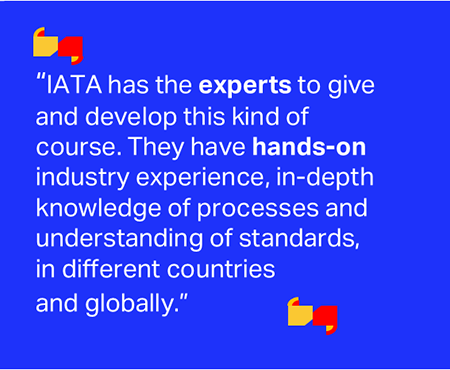
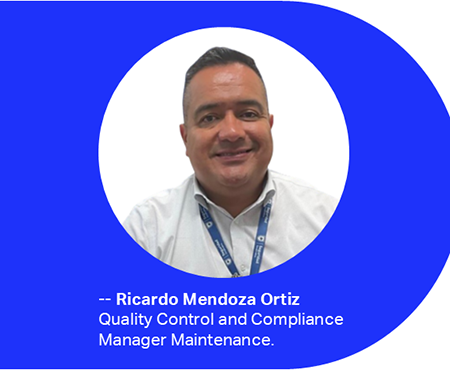
Training Buyers
Want to know how our courses can meet your teams' development needs? Talk to a training advisor to explore tailor-made solutions for your organization